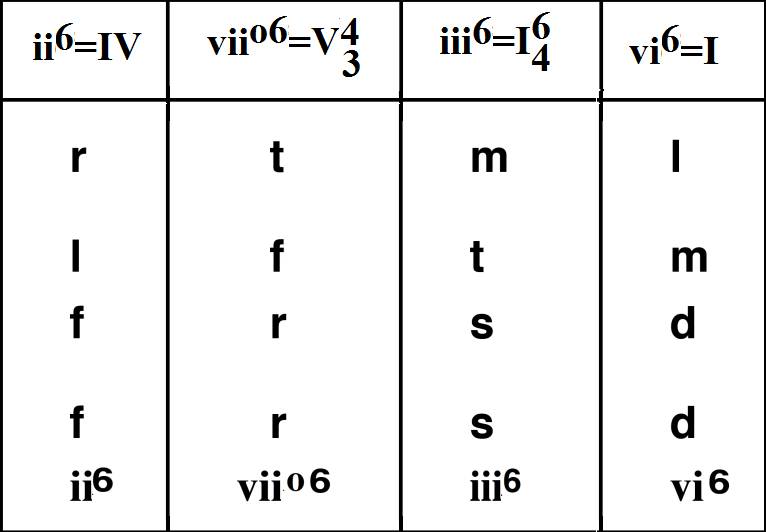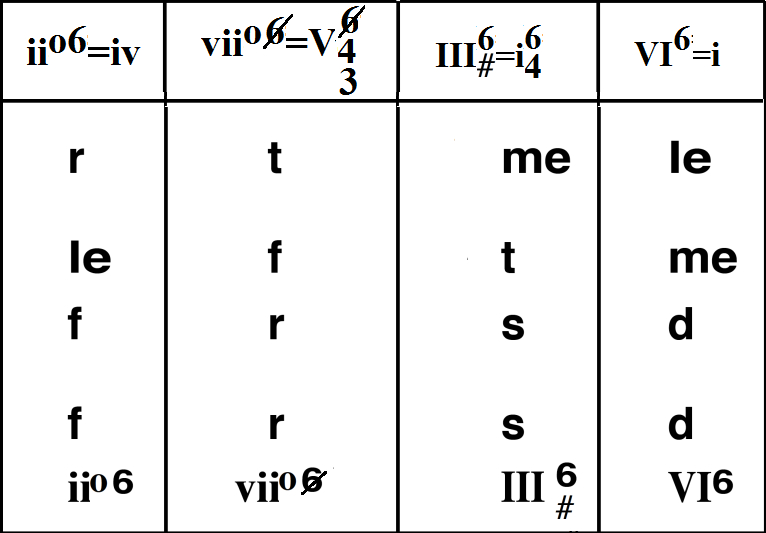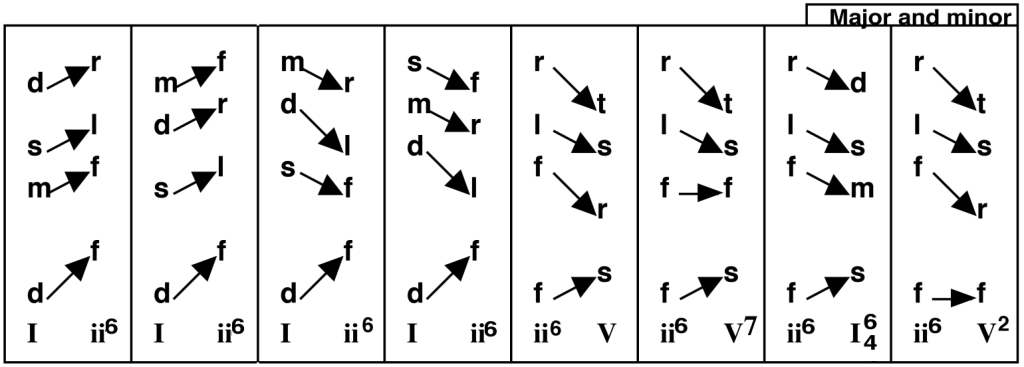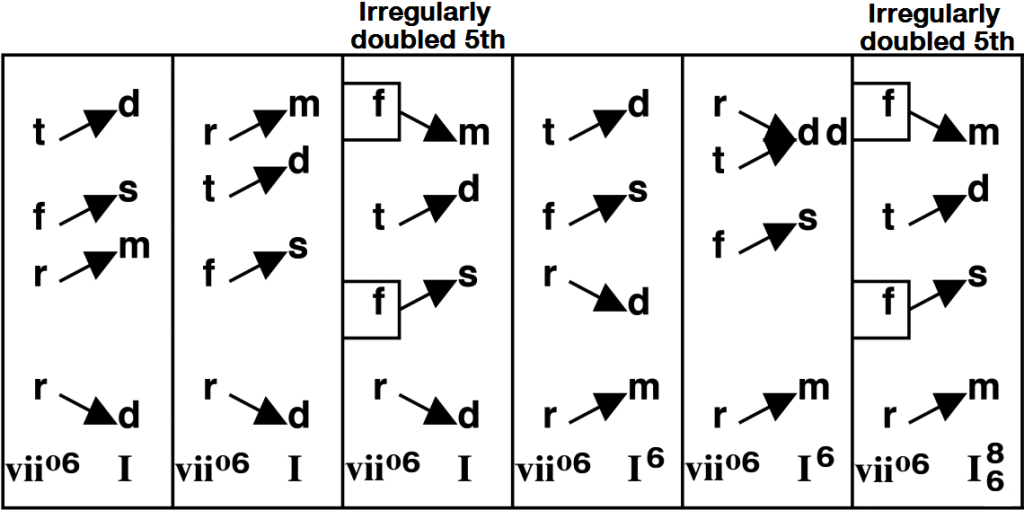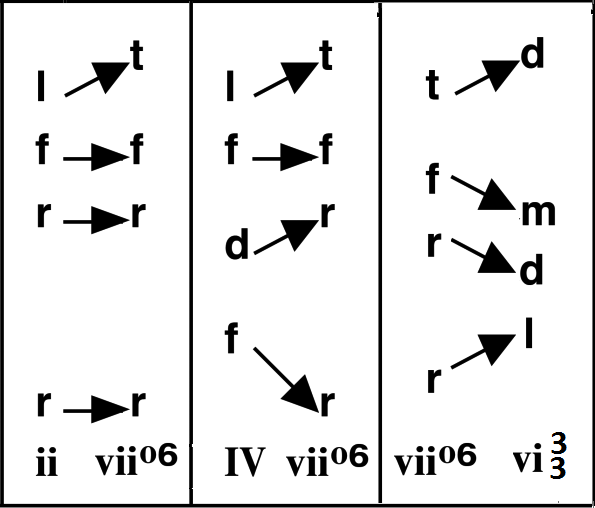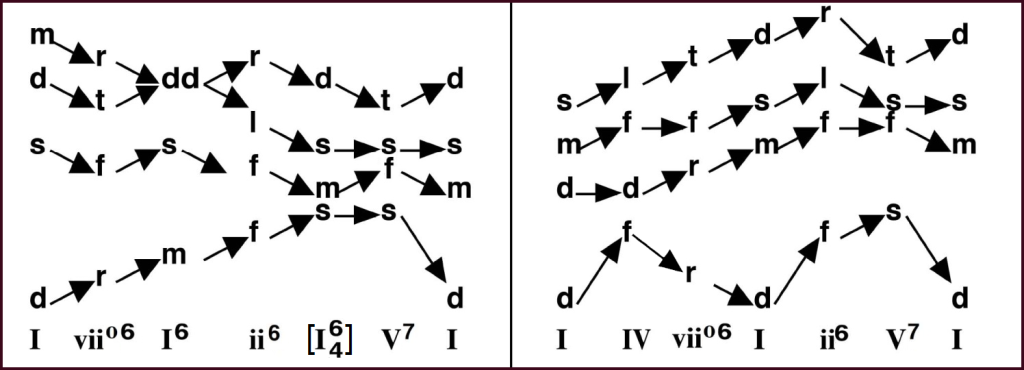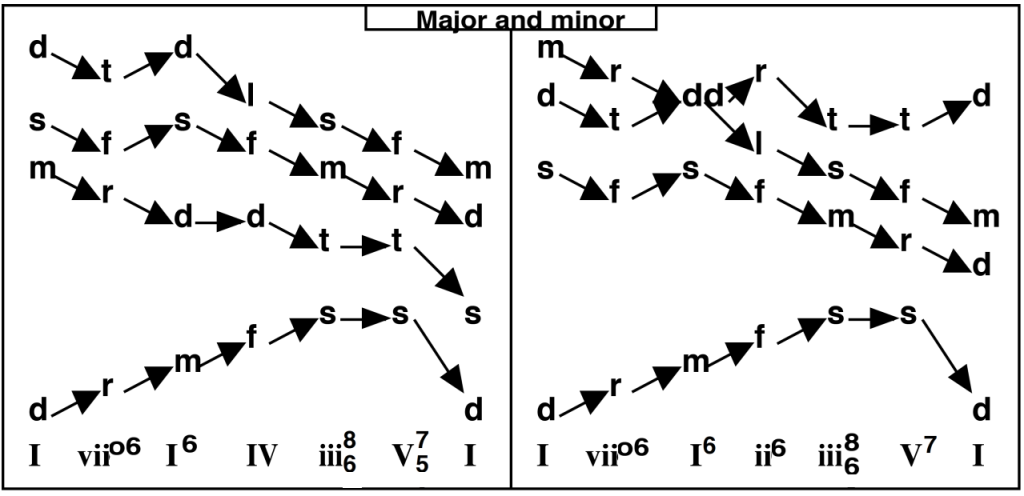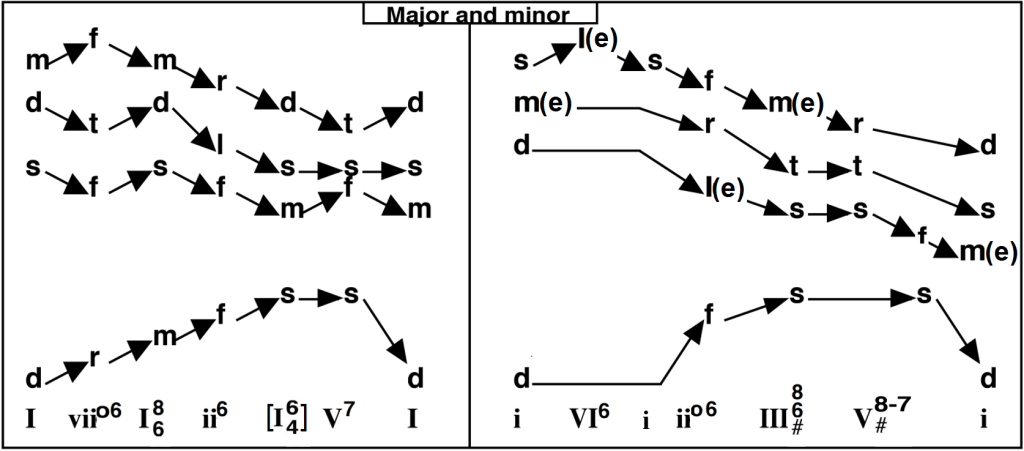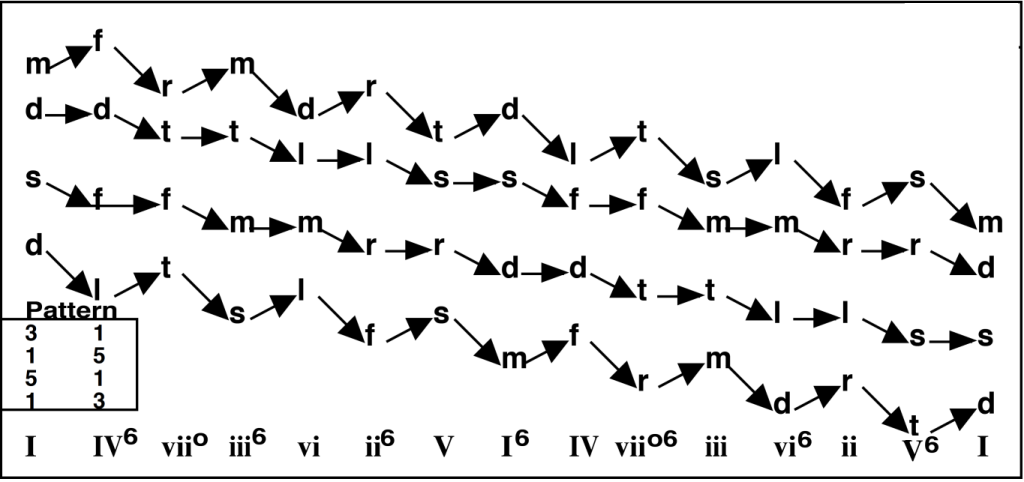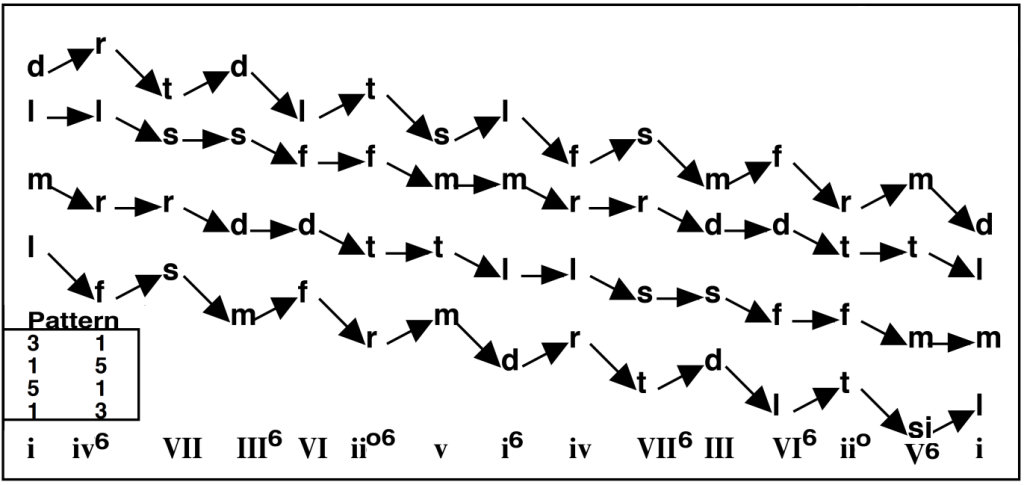9 Secondary Triads in First Inversion
Major
Subdominant Dominant Dominant Embellishment
Minor
A. The ii6 chord
The ii6 chord prolongs the IV chord in major (iio6 prolongs the iv in minor). As with the IV chord, the ii6 chord has a doubled bass.
The ii6 chord is followed by the dominant or by the [ I ![]() ] – V(7) formula. Contrary motion is employed to avoid parallel octaves (fa – so). The I – ii6 connection imitates the I – IV connection, with re replacing do of the IV chord. Works the same in minor.
] – V(7) formula. Contrary motion is employed to avoid parallel octaves (fa – so). The I – ii6 connection imitates the I – IV connection, with re replacing do of the IV chord. Works the same in minor.
Voice Leading using the ii6 chord
*Acceptable similar motion of all the voices of the I triad moving up to ii6 with the do – re or mi – fa soprano.
** In open spacing, unacceptable parallel P5ths can occur between ii6 – [ I ![]() ].
].
Irregular doublings
As with I![]() moving to IV, contrary motion is required when I
moving to IV, contrary motion is required when I![]() moves to ii6 to avoid parallel octaves.
moves to ii6 to avoid parallel octaves.
B. The viio6 chord
The viio6 chord with re in the bass substitutes the V![]() chord and the [ V
chord and the [ V![]() ] chord (see Linear Six-Four Chords).
] chord (see Linear Six-Four Chords).
- The 3rd (the bass) is doubled.
- The leading tone (ti) is never doubled and always moves to do. The other voices (re and fa) can move up or down.
- In harmonic minor, the leading tone is indicated as viio
 6 or viio
6 or viio 6.
6.
Voice leading using the viio6 chord
Major only to avoid le – ti A2.
**See “Other Uses of the Deceptive Resolution” in the chapter on Authentic, Half, Plagal, and Deceptive Cadences.
Voice leading considerations with the viio6 chord:
1a and 1b. The similar use of the viio6 and V![]() chords harmonizing the m – f – s soprano and d – r – m bass line. The d5 – P5 in the soprano and alto is acceptable as it is covered by the parallel 10ths in the outer voices.
chords harmonizing the m – f – s soprano and d – r – m bass line. The d5 – P5 in the soprano and alto is acceptable as it is covered by the parallel 10ths in the outer voices.
1b. If the 5th of the viio6 chord (fa) is in the soprano it is irregularly doubled an octave below.
2. The viio6 chord can also be used as a neighbor chord to a tonic chord with a m – f – s soprano. Parallel d5 to P5 are acceptable.
3. The m – f – m soprano ends on a I![]() chord.
chord.
C. The iii6 and vi6 chords
The iii6 chord can substitute for the cadential [ I ![]() ] chord. In minor keys, the chord is an augmented triad in first inversion.
] chord. In minor keys, the chord is an augmented triad in first inversion.
The vi6 chord often embellishes the tonic triad.
Voice leading using the iii6 and vi6 chords
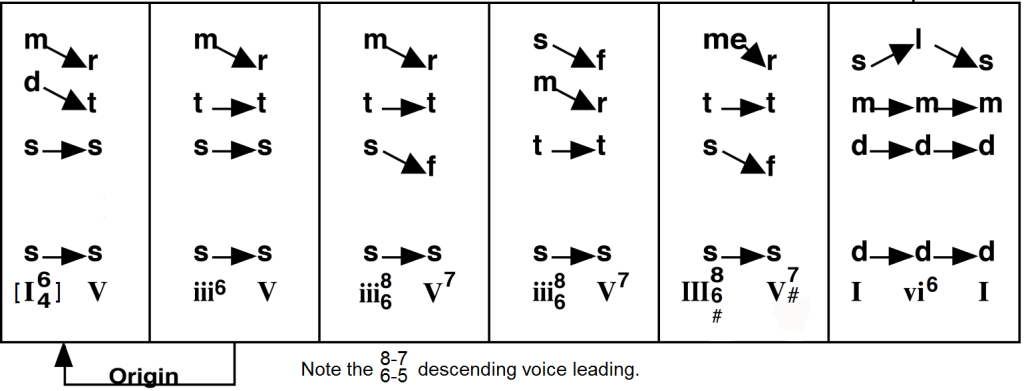
Sample Progressions Employing Secondary Triads in First Inversion
*From melodic minor
Imperfect Circle of Fifths with Inversions
In minor keys, the cadence is always in harmonic minor (V![]() – i ). The syllables below are in la-minor.
– i ). The syllables below are in la-minor.
Practice 1
Transpose the above examples into at least two different keys. Provide full analysis.
Practice 2
